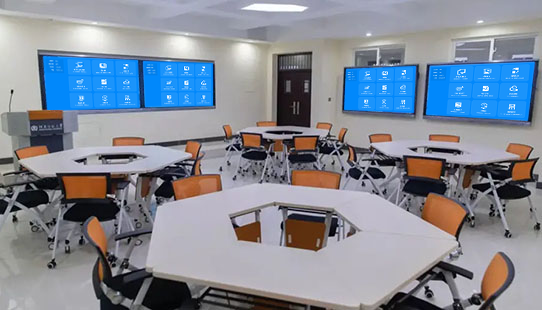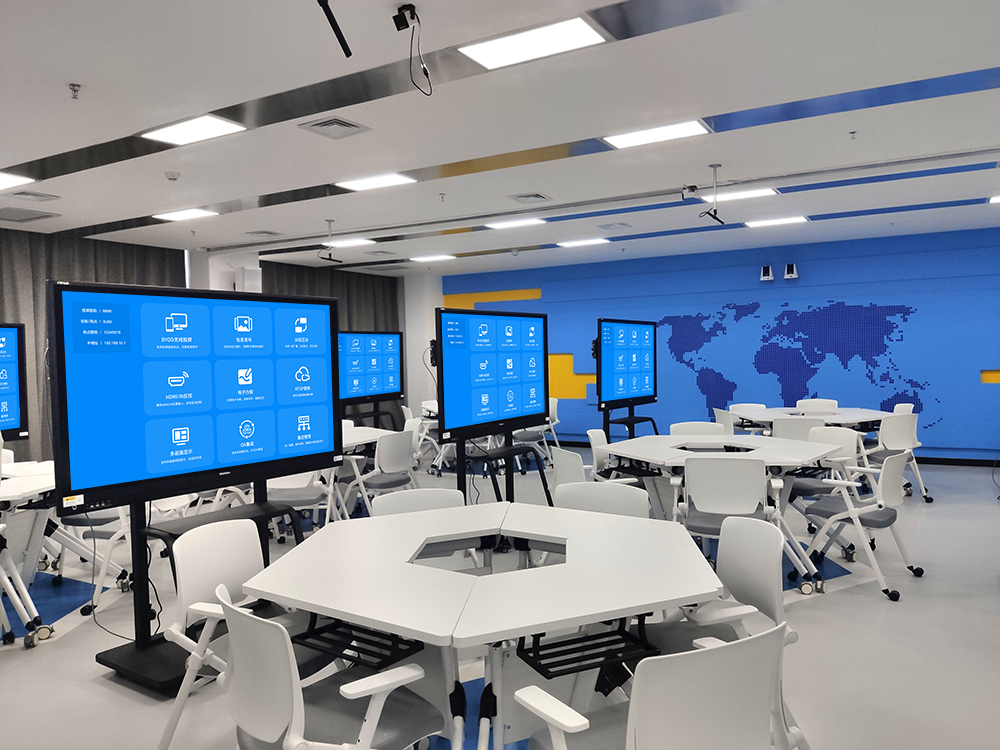Screen Mirroring for Interactive Classrooms: Make Teaching More Dynamic
Want to break the limitations of one-way lecturing in interactive classrooms? Screen mirroring software makes it easy! Compatible with multiple devices on both the teacher and student sides, it leverages wireless screen mirroring and real-time interaction functions to make courseware display, classroom interaction, and achievement sharing more efficient—helping create an active interactive teaching environment.
3-Step Quick Screen Mirroring, Easy for Teachers and Students
No complex debugging is needed; connection can be completed in 1 minute during class:
- Device Network Connection: Connect teachers’ and students’ mobile phones, computers, tablets, and classroom large-screen devices (such as smart blackboards and projectors) to the same campus WiFi.
- Open the Software: After launching the screen mirroring software, it automatically scans for nearby connectable large-screen devices. Device names are labeled by “Grade-Class” for easy identification and selection.
- One-Click Mirroring: Teachers click “Host Mirroring” and students click “Participate in Mirroring”, then select the corresponding classroom large screen. Connection is completed in 1 second, and the screen synchronizes instantly.
Core Functions Adapted for Teaching, Making Classroom Interaction More Efficient
Teacher Lectures: More Flexible Display and Explanation
- Hassle-Free Mirroring of Multiple Materials: Supports mirroring of various formats including courseware (PPT, PDF), teaching videos (MP4, MKV), experiment animations, and 3D models. No format conversion is required—just click to mirror.
- Real-Time Annotation for Key Points: Use a tablet or graphics tablet to circle, annotate, or write on the mirrored content. Annotation traces are synchronously displayed on the large screen and students’ devices, making key and difficult points clear at a glance.
- More Intuitive Split-Screen Comparison: Mirror “textbook original content” and “extended materials”, or “correct problem-solving steps” and “common mistakes” simultaneously. Split-screen display facilitates comparative explanation, helping students understand more deeply.

Student Participation: More Active Classroom Performance
- Raise Hand to Mirror Achievements: After completing assignments or group discussions, students click “Raise Hand to Mirror” to apply. With the teacher’s approval, they can mirror assignments or mind maps from their mobile phones/computers to the large screen for the whole class to review and comment on.
- Multi-Group Synchronous Display: After group discussions, 2-4 groups of students can mirror their achievements simultaneously. The large screen displays content in divided areas, enabling more efficient inter-group comparison and communication and avoiding time-consuming turn-by-turn presentations.
- Scan QR Code to Save Content: Students can scan a QR code with their mobile phones to save classroom courseware, annotations, and key notes to their personal learning spaces—no need to copy notes for after-class review.
Classroom Management: More Convenient Rhythm Control
- Mirroring Permission Control: Teachers can set modes such as “Teacher-Only Mirroring” and “Allow Students to Apply for Mirroring” to prevent irrelevant content from disrupting the class.
- Quick Content Switching: Teachers can switch between their own and students’ mirrored content with one click, and pause or stop mirroring at any time to flexibly control the teaching rhythm.
- Mirroring Without Network: During outdoor study trips or network failures, the software automatically generates a hotspot. Devices can connect directly for mirroring, enabling real-time explanation of on-site materials without interruption.
Adapted for Multiple Teaching Scenarios, Aiding Quality Improvement
Regular Classes: Bid Farewell to “Lecture-Only” Mode
When mirroring courseware, teachers intersperse real-time annotations and combine with students’ “raise hand to mirror” to share views—increasing classroom interaction rate by 50%. Calling up virtual experiment videos for mirroring visualizes abstract physics and chemistry principles, doubling students’ understanding efficiency.
Group Discussions: Deeper Collaboration
After dividing students into study groups, each group uses a tablet to mirror discussion results to their group screen. During the summary phase, results can be pushed to the main screen with one click. During inter-group review, suggestions for revisions can be annotated on the large screen, facilitating fuller collision of ideas.
Open Classes / Teaching Research: More Professional Display
In open classes, teachers’ mirroring runs smoothly without lag, and students’ achievements are displayed in an orderly manner. Observing teachers can scan a QR code with their mobile phones to view courseware, and review classroom details through mirroring records after class for more accurate teaching research and analysis.
Lightweight Adaptation and Easy Management, Assuring School Use
The software is compatible with Android, iOS, Windows, and macOS systems, and works with the school’s existing computers, tablets, smart blackboards, and other devices. The installer is less than 100MB, allowing smooth operation even on older devices.
School administrators can deploy the software in batches, set mirroring permissions, and view mirroring records of each classroom through the backend—enabling more efficient operation and maintenance management.
Using the right screen mirroring software in interactive classrooms transforms teaching from “one-way output” to “two-way linkage”, easily activating classroom vitality and helping improve teaching quality.
